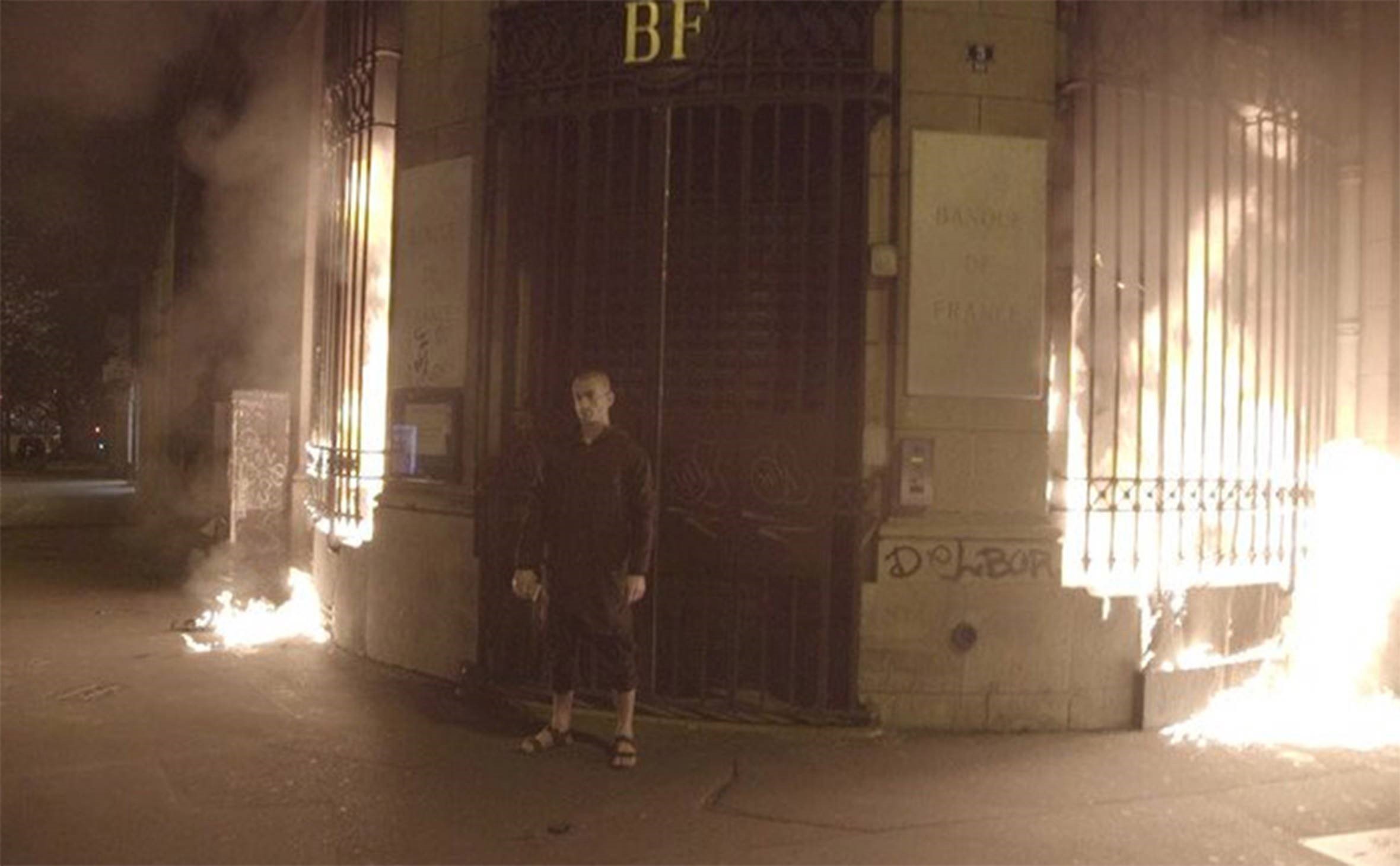Protest artist arrested after setting fire to Paris Bank
- Text by Niall Flynn

The Russian protest artist Petr Pavlensky has been arrested after setting fire to the Banque de France in Paris.
The blaze, started during the early hours of Monday morning, was part of a protest performance in response to the “economic system in Europe.” In a statement, Pavlensky – who has been residing in France after fleeing Moscow in January – called for a “great French revolution” in order to bring down the financial system, denouncing the “bankers (who) took the place of the monarchs.”
“The Bastille was destroyed by the rebels,” the artist said in a statement. “The people destroyed her as a symbol of tyranny and power. On the same place, a new home of slavery was built… The Bank of France has taken the place of the Bastille, the bankers have taken the place of the monarchs… The rebirth of the French Revolution will set off the fire of worldwide revolution.”

Petr Pavlensky in front of the Banque De France
The 33-year-old artist first gained notoriety in 2012 after sewing his mouth shut in protest against the incarceration of activist punk group Pussy Riot. Subsequent performances have seen him wrap himself in barbed wire, nail his scrotum to Red Square in Moscow and slice off his earlobe while sitting naked on the roof of the infamous Serbsky Center. He left Moscow for Paris at the beginning of 2017 after he and his partner Oksana Shalygina were accused of sexual assault – an allegation he denies.
The first ever exhibition of Pavlensky’s work is set to run at the Saatchi from 16th November – 31st December 2017, as part of Art Riot: Post Soviet Actionism at the Saatchi gallery.
Enjoyed this article? Like Huck on Facebook or follow us on Twitter.
You might like

In 2025, festivals have become defiantly political. Roskilde is one of the most powerful
A sea of people — Music and countercultural movements have a hand-in-hand relationship spanning decades. As authorities increasingly police traditional on-street protests, dancefloors and crowds are again becoming crucial spaces for solidarity, writes Ella Glossop, reporting from Denmark’s largest festival.
Written by: Ella Glossop

Remembering the radical anti-nuclear Greenham Women’s Peace Camp
Life at the Fence — In the early ’80s, a women’s only camp at an RAF site in Berkshire was formed to protest the threat of nuclear arms. Janine Wiedel’s new photobook revisits its anti-establishment setup and people.
Written by: Miss Rosen

Led By Donkeys: “It’s weird when right-wing commentators get outraged by left politics at Glastonbury – what did they expect?”
Send them to Mars — With their installation in Block9 launching the billionaire class into space, we caught up with the art and activism crew to chat about the long intersection of music and politics at the festival, how wrong the tech bros are, and more.
Written by: Isaac Muk

Meet Lilou Ruel, the parkour champion taking the sport vertical
Skypusher — After becoming the first woman to jump Paris’s infamous Manpower Gap, the French athlete has set the bar high for her fellow athletes. Now, having joined stunt school and acted as a body double for Charli xcx, she has her sights set on the film industry.
Written by: Hester Underhill

How pop music introduced queer culture to the mainstream
The Secret Public — Between the ’50s to the ’70s, pop music was populated with scene pushers from the margins. A new book by Jon Savage explores the powerful influence of LGBTQ+ folk.
Written by: Miss Rosen

In photos: Hundreds gather outside court to protest Kneecap terror charge
‘Free Mo Charah’ — With drums, smoke and applause, protesters greeted the rapper outside court as he was released on unconditional bail.
Written by: Ella Glossop

